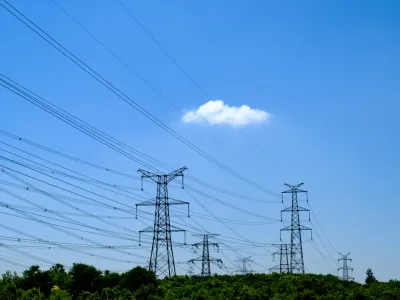Minnesota moves forward with transmission

Source: Northern States Power Company et al., Big Stone South – Alexandria – Big Oaks Certificate of Need Application (Sep. 29, 2023).
On Thursday, October 3, the Minnesota Public Utilities Commission (Commission) granted a Certificate of Need for the Big Stone South – Alexandria – Big Oaks transmission line and approved a route permit for the eastern segment of the project. The Big Oaks project is designed to strengthen the electric grid to ensure Minnesotans are provided with access to clean, affordable, and reliable utility service.
This decision represents the first of several related to transmission expansion within Minnesota and across the Midwest. As detailed in our previous articles, transmission will play a pivotal role in bringing new low-cost renewable energy resources online and will assist utilities in meeting Minnesota’s carbon-free standard.
The Big Oaks line is part of a broader long-range transmission plan approved by the Midcontinent Independent System Operator (the regional transmission operator, or MISO) to increase reliability and enable the cost-effective delivery of electricity. The first stage, or tranche, of MISO’s plan involves building 18 new transmission lines spanning the Midwest region of the United States. Tranche 1 will allow more renewable resources to be integrated onto the electricity system and aims to increase grid reliability. In total, this portfolio of projects is expected to provide approximately $37 billion in benefits over the next 20 years.
The eastern segment of the Big Oaks line is approximately 108 miles long and will connect an existing substation in Alexandria, Minnesota to a new substation near Becker, Minnesota. These substations connect the transmission “highway” to more localized distribution systems that bring electricity to homes and businesses. The project is designed to relieve reliability constraints that might otherwise prevent customers from accessing low-cost energy and, in doing so, will open up pathways for renewable resources to make their way onto the grid. A new outlet for energy generated in the wind-rich Dakotas will be created, and additional capacity will be made available for other energy projects. Construction on the eastern segment is planned to begin next year, and is expected to be completed by the end of 2027.
The eastern segment of the line is expected to cost between $135 and $143 million, while estimates for the western segment are higher, at $465 to $535 million. Additional expenses will be incurred to build and modify substations. Altogether, anticipated project costs range between $730 and $840 million. While the project is expensive, it will bring numerous benefits to Minnesotans. By relieving congestion on the transmission system, this project alone is expected to provide up to $3.8 billion in savings throughout the Midwest during its first 40 years of operation. The reduction in emissions enabled by the Big Oaks line is also estimated to have an economic benefit ranging from $77 million to nearly $439 million, depending on the cost of carbon and the types of resources added to the grid.